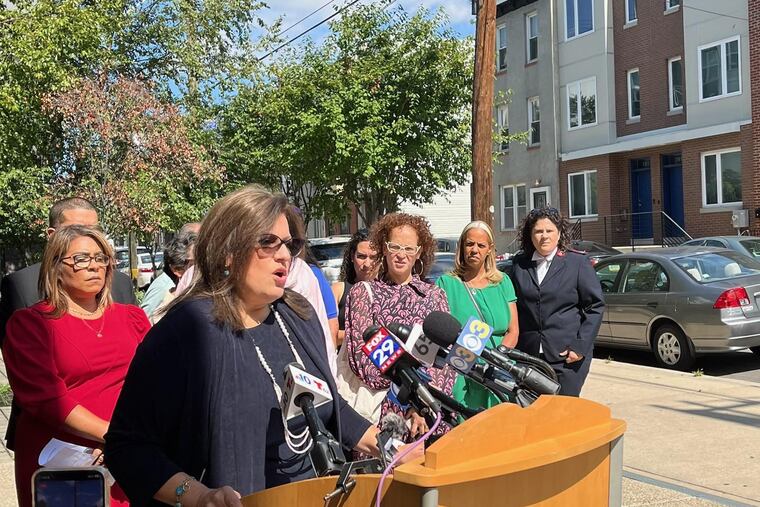Philadelphia’s 146,000 Puerto Ricans are increasingly the island’s economic first responders
According to Nilda Ruiz, CEO and president of the Asociación Puertorriqueños en Marcha, there is a collaborative effort of 40 local organizations ready to deploy disaster aid if needed.

Hurricanes and flooding are among the most damaging types of natural disasters. With meteorologists predicting an above-average Atlantic hurricane season rolling through the Caribbean, local social service organizations are on alert.
Nilda Ruiz, CEO and president of the Asociación Puertorriqueños en Marcha, said there is a collaborative effort of 40 organizations — Greater Philadelphia Long-term Recovery Community — that has raised money for past hurricanes and can be quickly activated this summer to advocate for disaster aid if the need arises.
Recalling the group’s work with 2017′s Hurricane Maria, the third most expensive storm in U.S. history, Ruiz said, “We were together almost two years.” Ruiz said it was a long but successful process with the organization raising about $400,000 for Maria victims.
Need for faster support
The problem is that as storms become more frequent and fierce, traditional means of governmental support or charitable philanthropy may be too slow and bureaucratic for the most vulnerable victims of a disaster — children, seniors, and the disabled — to fully recover. A slow response time may become a catalyst driving the death rate in the aftermath of the storm, as it was with Hurricane Maria.
“Now is the time to prepare.”
According to 2023 research, monthly remittance increased by 2% due to natural disasters in migrants’ home countries. This uptick in giving becomes significant within a few months after the event and lasts for about a year. Support from relatives who have moved or emigrated is often substituting for delayed government support.
Storm predictions
The National Oceanic and Atmospheric Administration (NOAA) is predicting 17 to 25 named storms this season, with 8 to 13 forecasted to become hurricanes.
“That forecast is the greatest number of storms that we’ve forecast,” said Ken Graham, director of the National Weather Service. “Now is the time to prepare.”
» READ MORE: Hurricane season may rank among the busiest on record, NOAA says
“We will always mobilize,” said Adonis Banegas, executive director of Concilio, a social services agency. “But Puerto Rico is still digging out from Maria. More infrastructure is needed in the island.”
“People tend to forget after a while because there is always something [else] coming up.”
In 2017, Hurricanes Irma and Maria caused billions of dollars in infrastructure damage in Puerto Rico, including demolishing the electrical grid, health care, transportation, housing, and social services, according to the Hispanic Federation. Hurricane Fiona hit in 2022 and dropped 30 inches of rain on parts of Puerto Rico, causing historic flooding levels and further damage to the electrical grid.
Urgent needs, slow support
During the fundraising drive for Fiona, Ruiz acknowledged that the donations were coming in slowly, in part because the devastation wasn’t as severe as with Maria, but also because donor attention gets diverted by other crises.
“People tend to forget after a while because there is always something [else] coming up,” she said.
The U.S. Governmental Accountability Office (GAO) reported in February that “as of June 2023, FEMA has awarded $23.4 billion in public assistance funds for Puerto Rico to recover from the 2017 hurricanes and 2019 and 2020 earthquakes. Of that, it has spent $1.8 billion and a lot of work remains, but increased costs may lead to funding shortfalls for projects.”
» READ MORE: Philly groups announce fundraising effort to quickly offer assistance to Puerto Rico
The 146,000 Puerto Ricans who live in Philadelphia and have family still on the island are, increasingly, economic first responders.
“Cash assistance can also help move families faster toward rebuilding their lives. Cash also provides a much-needed jolt to local economies, which can also be a major boon to recovery,” according to the Center for Disaster Philanthropy.